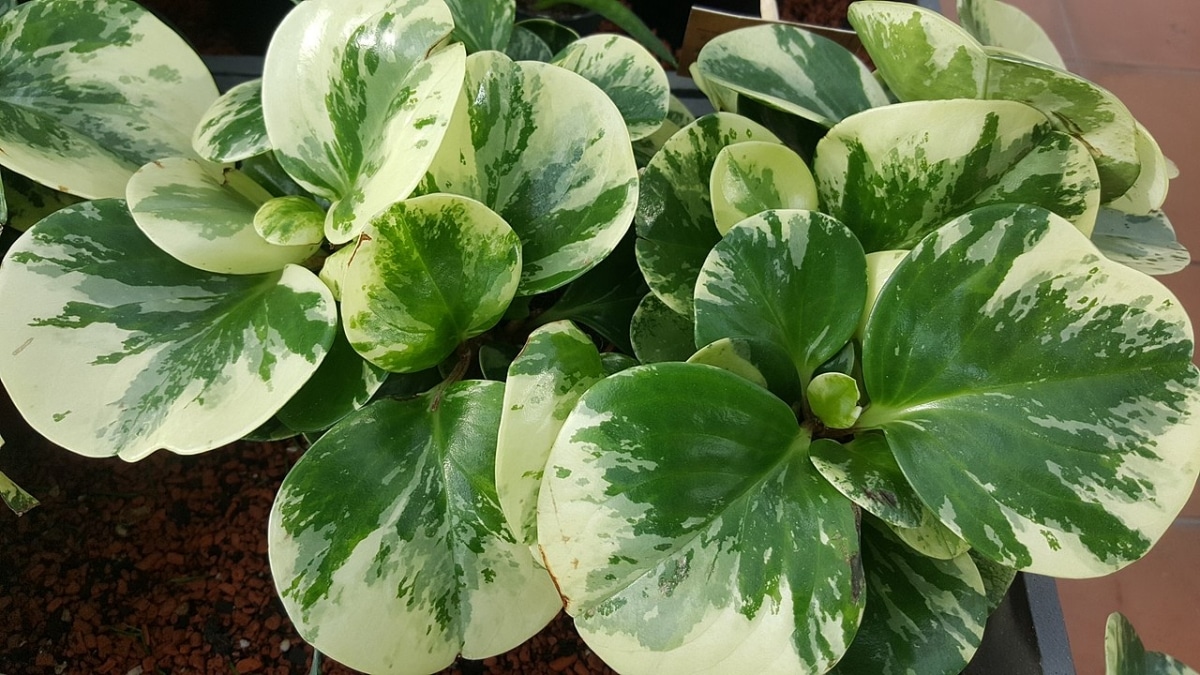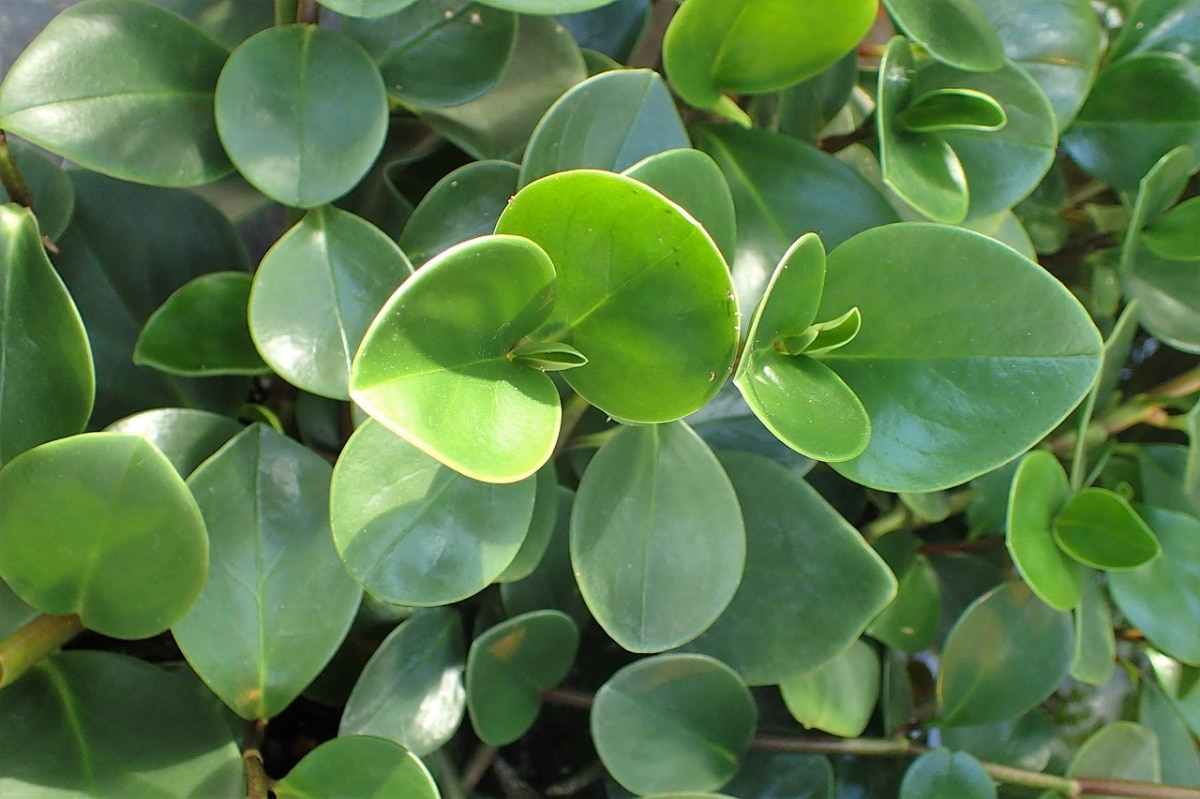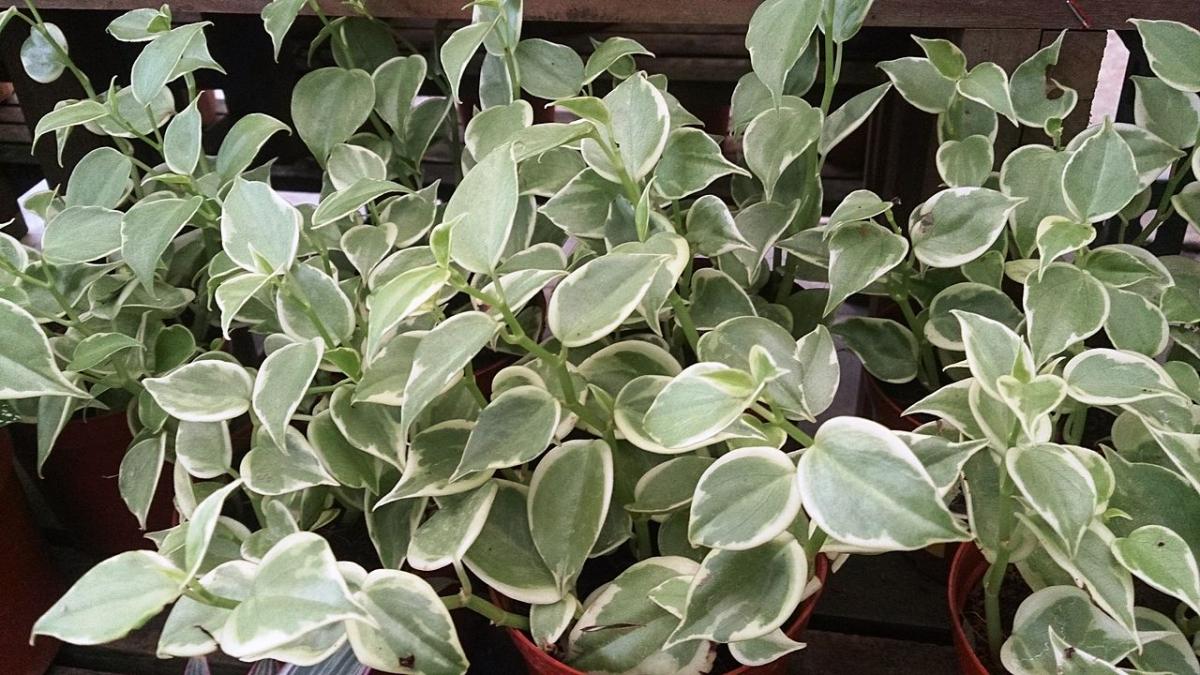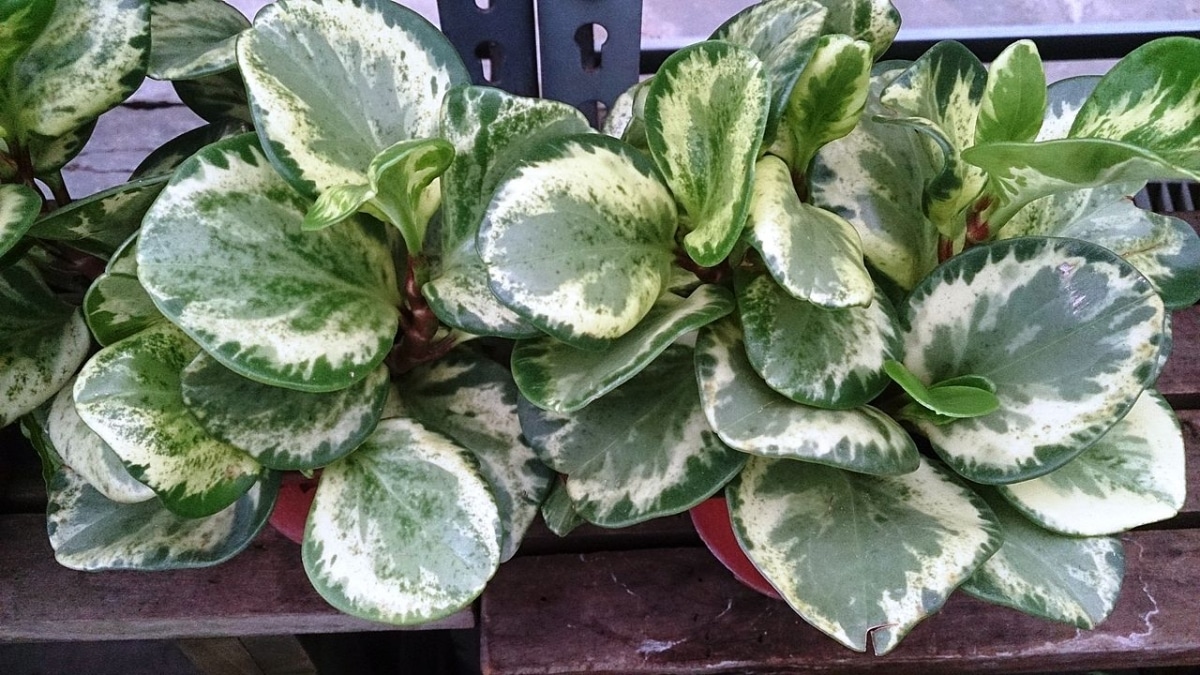
Image - Wikimedia / James Steakley
La Peperomia obtusifolia It is a fantastic plant that can be grown throughout its pot life as it is relatively small. In addition, its leaves are so decorative that it looks great in any corner, even inside the home.
If you are thinking of getting one and want to know how you should take care of it, Below I will offer you many tips that will be very useful so that you can enjoy it to the fullest.
Origin and characteristics

Image - Wikimedia / Krzysztof Ziarnek, Kenraiz
Our protagonist is a perennial herbaceous plant native to Florida, Mexico and the Caribbean islands. Its scientific name is Peperomia obtusifolia, although it is usually known as Peperomia or variegated peperomia. It reaches a height of about 25cm in height and width, and its leaves are leathery and rounded, dark green or variegated. (green and yellow). The flowers are grouped in spike-shaped inflorescences and are white.
Due to its origin, can only be grown outdoors year-round in frost-free climates; therefore, it is often kept as a houseplant.
What are their cares?
If you want to have one, we advise you to provide it with the following care, since this will make it easier for you to keep it for many years:
Location
- Body exterior:: in shade but with lots of light; that is, it does not have to be in direct sunlight, but it does not have to be in a dark area either.
- Interior: in a room with plenty of natural light, and where it can be away from drafts. It is also important that the humidity is high, so you can put glasses of water around it, for example.
Earth
- Flower pot: universal growing medium mixed with 30% perlite as this. The pot must have holes in its base, because if it were planted in one that did not have the roots and therefore the rest of the plant would rot.
- Garden: the soil must be fertile and have good drainage. It cannot grow on compact soils or where there are hardly any nutrients. Therefore, it should not be planted in those that have a tendency to erosion.
Irrigation

Image - Wikimedia / Mokkie
Irrigation of the Peperomia obtusifolia it will be done, more or less, about 3 times a week in the warmest season, and slightly less the rest of the year. In any case, it must always be borne in mind that it is much easier to recover a dry plant than one that has suffered from excess water. For this reason, we advise you to check the humidity of the soil before watering it, for example with a humidity meter such as this.
This is very easy to use, since you simply have to introduce it into the ground to find out what degree of humidity it has (high, medium, low). If it is low, then it will mean that it is dry, and therefore you have to water.
But in addition to knowing when to rehydrate our plant, it is also important that we know how to water it. And is that You have to do it by pouring the water on the ground, since you do not have to wet the leaves. Also, during the autumn and winter we have to make sure that this water is not cold, but rather warm, since otherwise it could suffer.
Likewise, rainwater should be used whenever possible, or failing that, one that is not very alkaline -that it has a pH between 5 and 7-. When in doubt, you can find out what the pH is with a measurer, and if it is higher than 7, lower it with a little lemon or vinegar.
Subscriber
From early spring to late summer with fertilizers authorized for organic farming. If it is in a pot, it is preferable to opt for liquid products so that the soil can continue to absorb and filter the water, and so that the roots continue to grow normally.
Multiplication
Plant Peperomia obtusifolia multiplied by cuttings with leaves in spring, when it has already settled and temperatures exceed 18ºC. To do this, you have to cut a stem with leaves and impregnate its base or with rooting hormones such as these, or with homemade rooting agents if at that time we have.
Afterwards, coconut fiber is taken that you can buy here, and it is put in a container with water so that it absorbs the humidity. This is a substrate that facilitates the growth of the roots and that, in addition, has an ideal pH for this plant, but as it is sold in blocks, they must first be undone by submerging them in water.
Then, the pot is filled with this substrate, and a hole is made in the center: this is where the cutting will be introduced. And so that it does not rot, we will treat it with a fungicide that contains copper; this way it will be more difficult for fungi to damage it.
Rusticity
It does not support cold or frost. The minimum temperature must be 12ºC or higher.

Image - Wikimedia / Mokkie
What did you think of Peperomia obtusifolia?
I have the peperomia, it is a very beautiful and decorative plant, thank you for informing me about the care
Hi carmen.
We are glad that it has been useful to you.
regards
It is a very beautiful plant
Hi! I have a peperomia, known as “Santa Rosa”, several weeks ago, from information I read, I watered the substrate and the leaves with plenty of water, and that's when the plant began to go from bad to worse, it is fallen and the leaves they have lost volume ... how can I treat it?
Hello Ariana.
Do you have a plate under it? It is that if so, the first thing is to remove it, or at least remove any stagnant water.
Afterwards, I recommend treating it with a multipurpose fungicide (that is, with an antifungal product), as this plant is vulnerable to infection by these microorganisms.
And to wait.
When the soil is completely dry again, water without wetting the plant.
Regards!
Sorry, it is true that it has properties for love
Hello Maria.
I don't think it has properties. That is, nothing has been scientifically proven in this regard.
Regards!
I have consulted the advice for the care of the Alocasia and Peperomia plants, they have seemed fantastic to me, I will start them to keep them beautiful, thank you very much!!
Thank you very much for following us 🙂
I love that plant...she is one of the plants that exert fascination in my life...it lifts my spirit...and they look beautiful